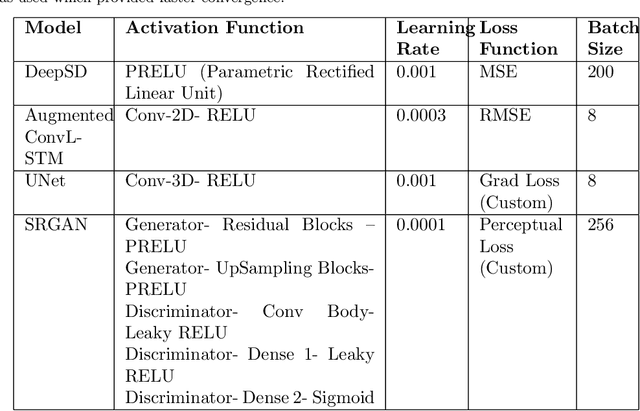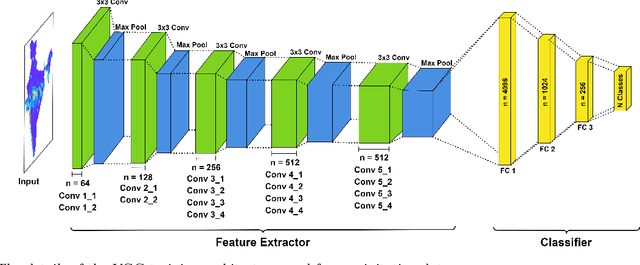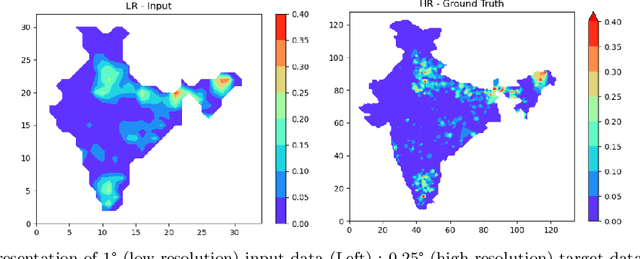Bhupendra Bahadur Singh
Towards Location-Specific Precipitation Projections Using Deep Neural Networks
Mar 18, 2025Abstract:Accurate precipitation estimates at individual locations are crucial for weather forecasting and spatial analysis. This study presents a paradigm shift by leveraging Deep Neural Networks (DNNs) to surpass traditional methods like Kriging for station-specific precipitation approximation. We propose two innovative NN architectures: one utilizing precipitation, elevation, and location, and another incorporating additional meteorological parameters like humidity, temperature, and wind speed. Trained on a vast dataset (1980-2019), these models outperform Kriging across various evaluation metrics (correlation coefficient, root mean square error, bias, and skill score) on a five-year validation set. This compelling evidence demonstrates the transformative power of deep learning for spatial prediction, offering a robust and precise alternative for station-specific precipitation estimation.
On the modern deep learning approaches for precipitation downscaling
Jul 02, 2022



Abstract:Deep Learning (DL) based downscaling has become a popular tool in earth sciences recently. Increasingly, different DL approaches are being adopted to downscale coarser precipitation data and generate more accurate and reliable estimates at local (~few km or even smaller) scales. Despite several studies adopting dynamical or statistical downscaling of precipitation, the accuracy is limited by the availability of ground truth. A key challenge to gauge the accuracy of such methods is to compare the downscaled data to point-scale observations which are often unavailable at such small scales. In this work, we carry out the DL-based downscaling to estimate the local precipitation data from the India Meteorological Department (IMD), which was created by approximating the value from station location to a grid point. To test the efficacy of different DL approaches, we apply four different methods of downscaling and evaluate their performance. The considered approaches are (i) Deep Statistical Downscaling (DeepSD), augmented Convolutional Long Short Term Memory (ConvLSTM), fully convolutional network (U-NET), and Super-Resolution Generative Adversarial Network (SR-GAN). A custom VGG network, used in the SR-GAN, is developed in this work using precipitation data. The results indicate that SR-GAN is the best method for precipitation data downscaling. The downscaled data is validated with precipitation values at IMD station. This DL method offers a promising alternative to statistical downscaling.
 Add to Chrome
Add to Chrome Add to Firefox
Add to Firefox Add to Edge
Add to Edge